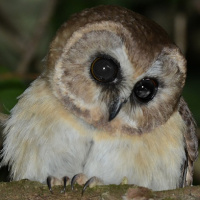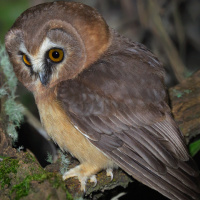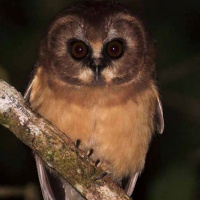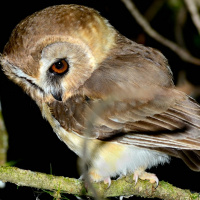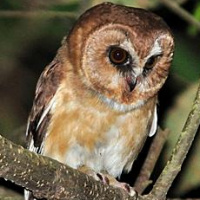Introduction
The Unspotted Saw-whet Owl is a small owl with a rounded head and no ear-tufts. The species name ridgwayi was named for American ornithologist Robert Ridgway.
Photo Gallery (5 pictures)
Sound Gallery
Information
Description: The facial disc is brownish, paler around the eyes, with a whitish rim. Eyebrows, chin and lores are whitish, contrasting with
the darker face. Eyes are yellow to honey-yellow. Cere and bill are dark horn. The rest of the head and entire upperparts are earth-brown, with the head and
mantle sometimes being a little darker than the rest. The crown sometimes has fine whitish shaft-streaks.
The wings are brown, with narrow white edges to both alulae and to the primaries, while the inner secondaries have white spots.
The tail is uniform brown, with the inner webs of the rectrices (not normally visible) have a few white spots.
The breast is dull cinnamon-brown, forming an indistinct broad pectoral band. The belly is plain yellowish to pale ochre-buff.
Toes are flesh-coloured, with some buffish bristles. Claws are dark brownish-horn.
Size: Length 18-20cm. Wing length 133-146mm. Tail length around 64mm. Weight around 80g.
Habits: Little known. This owl is an unsociable and nocturnal bird. Flight is with rapid wing beats, and fluttery in character.
Voice: The territorial song of the male is a sequence of 4-10+ mellow, melancholy 'toots' on an even pitch and generally equally spaced. This phrase repeated several times at short intervals. A high-pitched trill is described from excited birds.
Hunting & Food: Not well studied - probably feeds mainly on small rodents and shrews, as well as small birds and bats, and possibly frogs and insects.
Breeding: Little known, probably nests in tree cavities. Clutches of 5-6 white eggs have be found in the month of March.
Habitat: Montane and cloud forest with oaks and pines from about 1400-3000m elevation. Frequents canopy and forest edge, as well as pastures with groups of tall trees.
Distribution: Southern Mexico and Guatemala. Also a small area in northern El Salvador. Also central Costa Rica to western Panama.
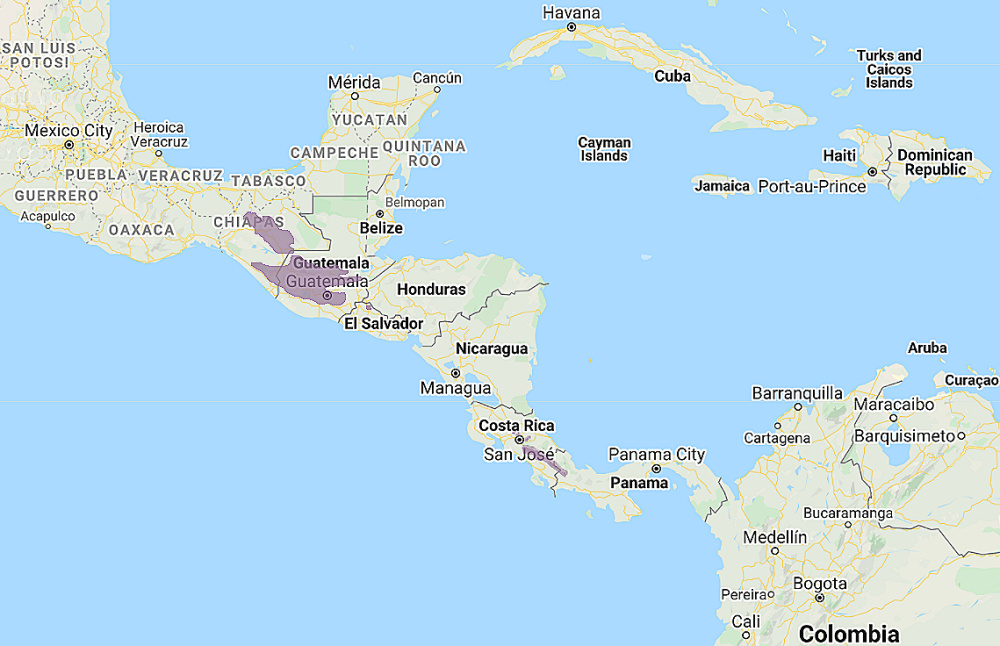
Range of the Unspotted Saw-whet Owl Aegolius ridgwayi
Status: Listed as 'Least Concern' by Birdlife International.
Original Description: Alfaro, Anastasio. 1905. Proceedings of the Biological Society of Washington (Proc. Biol. Soc. Wash.) 18: p. 217.

